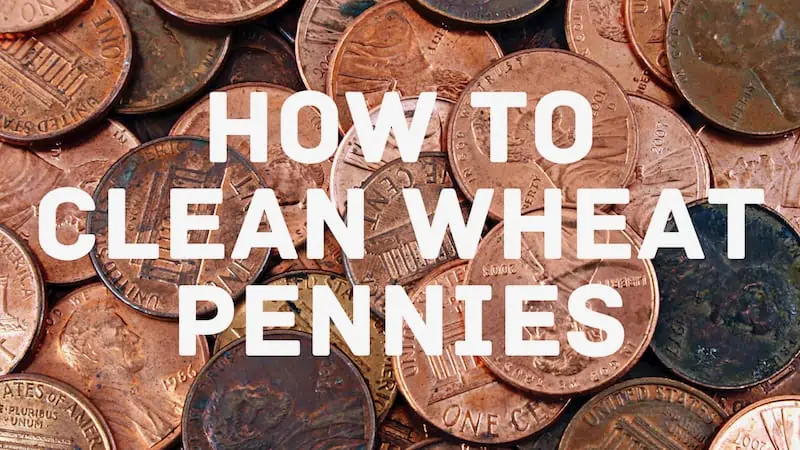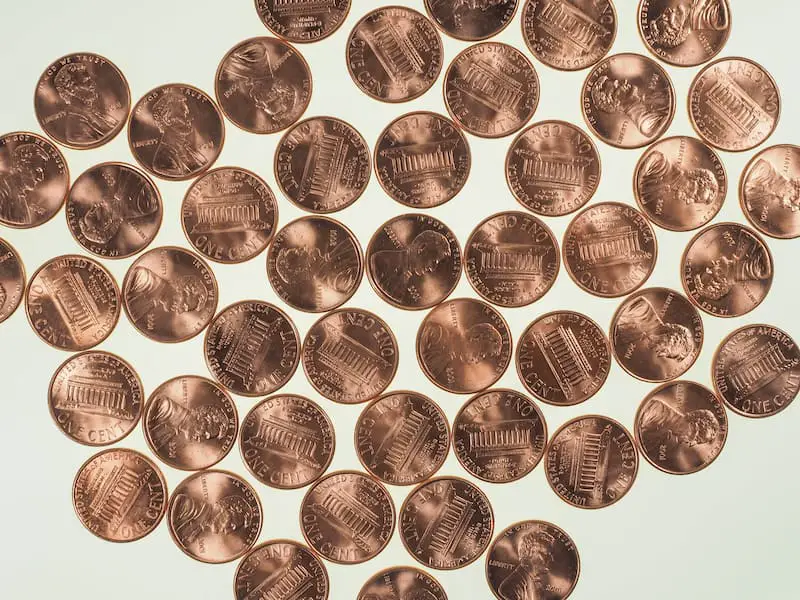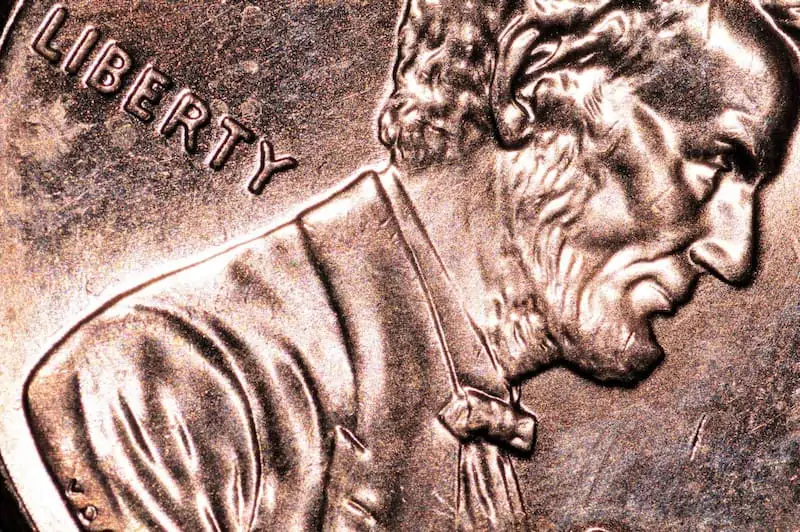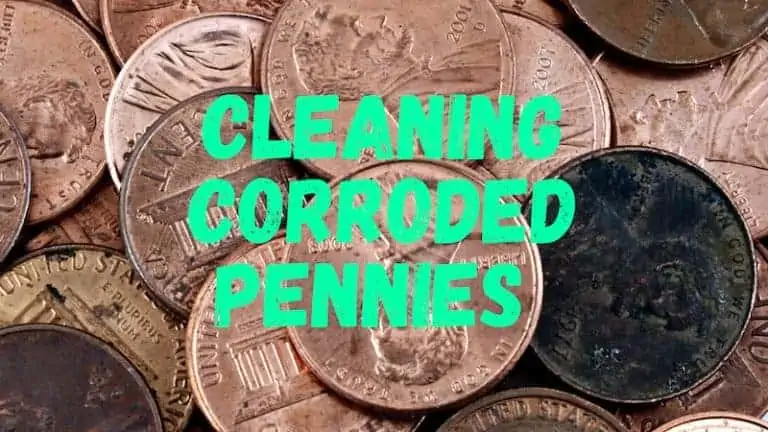How to Clean Wheat Pennies Safely and Without Damage

Wheat pennies are a relatively common find when metal detecting. These coins range in value from a few cents to a small fortune, if you are lucky enough! The composition of the coin, the condition of the coin, and the year of the coin all affect its value.
My dad has collected coins my entire life. He has a hefty collection of wheat pennies that he’s found with various techniques. There is something so magical and intriguing about looking through coins from the past.
If you have recently gone metal detecting and found several wheat pennies, what do you do with them now? Cleaning them can go wrong very quickly—and who wants to devalue their newly found treasure? So, in this article, I’m going to explain to you exactly how to clean wheat pennies safely and effectively!
Should I Clean My Wheat Pennies?
Well, the general rule is if you intend on selling your wheat pennies, you should not clean them. Cleaning and polishing rare and old coins can devalue them. Get an appraisal before you clean them—if you plan to sell them.

If you are keeping them for sentimental value or for your own personal collection, you may certainly clean them. In fact, it would probably be extremely wise to do so, at least from a sanitary perspective.
But, if you are in doubt about how to clean your pennies, it is a good idea to leave them alone or consult a rare coin specialist before you begin the cleaning process. Many professional coin collectors and coin valuers recommend leaving the coins as they are. Even if they appear corroded and lacking shine or have a tarnish on them.
Many people think that a shiny coin will be worth more than a tarnished, old looking coin. This may be true in certain aspects, such as uncirculated monies. However, with old coins you have found while metal detecting, you may want to refrain from cleaning.
How Cleaning Devalues Coins
When a rare coin is found, it is often submitted to professionals, such as those at PCGS, or Professional Coin Grading Services. Signs of cleaning can be evident in many ways and often affect the value of the coin.

Abrasive cleaners, like using a brush along with an acid or alcohol-based cleaning solution, can leave minuscule hair line discrepancies on the metal that can only be seen under magnification and in the right lighting. Experts can always tell if a coin has been cleaned improperly.
When a coin has evidence of cleaning, it is valued as “Genuine-Cleaned.” This means that despite the condition of the coin, it will be valued less than Fine range coins that have not been cleaned. It is always at the discretion of the buyer whether the minute scratches and damaged caused by cleaning is an issue.
PCGS offers a restoration service that can aid in cleaning your coins professionally. They can clean your coin if it has PVC residue, dirt, debris, adhesive, tape reside, copper spots on gold, or toning issues.
You can also seek the services of the Numismatic Conservation Services. They can eliminate or reduce the effects of outside contaminates that have caused issues with your coins. This service does not come with a grading protection guarantee.
Most Valuable Wheat Pennies
Some wheat pennies found can be worth a small fortune. If you happen to find one of these while metal detecting, do not attempt to clean them yourself! Have them professionally cleaned or sell them as is. Cleaning these will absolutely devalue them if they are not cleaned properly–so just be mindful of this.
In terms of valuable wheat pennies, while it can range vastly depending on the penny’s condition, here are some “best case” scenarios in terms of value for a select few:
- 1944 Steel Wheat Penny – $500,000
- 1943 Copper Wheat Penny – $100,000
- 1914 D Wheat Penny – $10,000
- 1922 D Wheat Penny – $6,000
- 1926 Wheat Penny – $4,000
If you happen to have one of these in your wheat penny collection, consider yourself incredibly lucky! Do not clean these valuable pennies on your own, and if you do, only use distilled water. Do not rub them or the dirt and debris on them can scratch them and ruin the value.
How to Clean Coins You Intend to Keep
Let us move on to how to clean wheat pennies you intend to keep or sell yourself without any type of professional grading service. There are many methods you can use at home to clean your wheat pennies, and other coins you have found, safely and carefully.
First, do not every use any type of jewelry cleaner or metal polish on coins. Those are meant to clean items like antique silver vases and your wedding ring. They are too harsh and abrasive to clean wheat pennies with. You will end up with irreversible damage to the coins. Keep reading below for the best methods for safely cleaning your wheat pennies at home.
Water
Water is one of the best and safest ways to clean your wheat pennies. Plain tap water is a good options, if you know your water is not corrosive or hard. If you do have hard water or highly acidic water, try using distilled water.
Simply run the water over the coin, or let it soak in the water. Try not to rub the coin too much with your fingers or the dirt, silt, and other residue on the surface can damage the coin.
Dish Soap
Gentle dish soap, like Dawn, is a good option for getting those wheat pennies shining again. In fact, I use dish soap to clean my wedding ring, necklaces, and other jewelry.
This works well because the dish soap will loosen dirt and grim, and gently lift it from the surface of the metal object. With wheat pennies, you will want to fill a small dish with fresh water and some dish soap.
Again, if you have hard or corrosive water, go with distilled water. Let them soak for a while. You can use your finger or an exceptionally fine brush to remove any stuck-on dirt. The soap should help keep the coin safe while you gently scrub it.
White Vinegar
One of the most recommended cleaning solutions for wheat pennies is white vinegar. The acetic acid in white vinegar can help remove contaminants from your coins. Vinegar will remove any oxides formed on the coin surface.
Get a corrosive resistant container, such as a glass, and soak your wheat pennies in the vinegar for at least 30 minutes. Ensure you rinse all the vinegar off the coin once it is cleaned. Let them air dry or wipe them with a soft, microfiber cloth.
Hydrogen Peroxide
Hydrogen peroxide can be an effective way to clean your coins. It removes various materials including organic material. Use a small plastic container full of hydrogen peroxide. Soak for 24 hours. Rinse the coins with fresh water after 24 hours and let them air dry.
Mouthwash
Mouthwash not only helps with dental health but can help you clean up dirty coins. Listerine and other antiseptic mouthwashes can clean dirt, oil, and debris from old coins. Place the coins in a plastic container and cover with mouthwash. Soak the coins for 12 hours. Rinse with freshwater and let air dry.
Baking Soda
Again, cleaning corrosion off wheat pennies can harm the value significantly. If this does not bother, you and you simply want to restore the coin for yourself you can use a baking soda paste. Wet the coin with water and roll in baking soda.
Gently scrub the coin with an incredibly soft brush. Rinse the baking soda off with fresh water. Repeat, as necessary.

Less Common Cleaning Methods
There are a variety of cleaning methods for wheat pennies. Some of these have relatively sound science behind them, but they should be used at your own risk.
One not so common cleaning method I found is using ketchup. I know it sounds strange, but stay with me. Ketchup is composed of vinegar, salt, and tomatoes. Admittedly, this one is hard to see working well, so I always suggest testing brand new coin cleaning methods on a coin you care absolutely nothing about. That way, if the cleaning method damages the coin, you’re not going to be upset about it.
Salt and vinegar combinations have been used to clean coins for many years–this method is actually on display in one of the earlier videos I shared above.
You can also clean pennies with a combination of salt and lemon juice or salt and orange juice. The concept is the same as white vinegar and salt. The citrus juices are acidic, and mixed with salt, can remove corrosion and debris from wheat pennies.
If you do not rinse all the vinegar off your wheat pennies, they may turn green or bluish green. This happens because the vinegar and salt dissolves the copper oxide layer of the penny. This makes it easier for copper atoms to join oxygen from the air and chlorine from the salt and form a blue green compound called malachite. This is what gives some pennies their odd bluish hue.
Conclusion
Remember, cleaning a wheat penny you have found while metal detecting might make it look better to you, but to a professional numismatist, it will be ruined.
In fact, 99% of coins do not increase in value after you clean them. They will, in fact, devalue. If you are planning to keep the coins for your own collection, you may certainly clean them as you see fit.
If you have questions, always seek the help of a professional coin cleaner and coin grading service. Most wheat pennies that are not extremely rare will sell for at least 3 to 5 cents at most coin dealers.
If you decide to clean your wheat pennies, make sure you start with the least invasive cleaning method first. This means distilled water. Water is less abrasive than other cleaning methods and should clean most of the dirt and debris off your wheat pennies.
If the water is not enough, continue down the list and use dish soap. Dish soap is another good cleaning method and is very gentle. If it can clean oil off baby ducks, it should be able to clean your wheat pennies with very little damage!
If you are not worried about damaging the coins as much, you can continue down the list and use some of the more abrasive cleaning methods. You must remember to use these at your discretion. They may damage the surface of the wheat penny and devalue them.
If you are keeping them or do not care if they are damaged, you can use methods like vinegar, peroxide, baking soda, mouthwash or even, dare I say, ketchup! Just remember to rinse the pennies thoroughly after all cleaning methods. You do not want to leave behind any residue that may further degrade the penny’s condition!
I hope you enjoyed this article and have learned more about how to clean wheat pennies!

